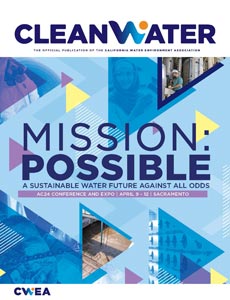Technical Session Proposal
Laboratory/ELAP
TNI-2 Implementation Lessons Learned
Thursday, April 11, 2024
11:15 AM - 12:05 PM
Location: A9-A11
.jpg)
Mark D. Koekemoer
Regulatory Compliance Manager
Central Marin Sanitation Agency
San Rafael, CA- TL
Teresa E. Lopez (she/her/hers)
Environmental Project Scientist
Robertson-Byran, Inc.
Lead Presenter(s)
Track Lead(s)
Presentation Description: In 1988, the California Environmental Laboratory Improvement Act (ELIA) became law and established Environmental Laboratory Accreditation Program (ELAP) to evaluate and provide accreditation to environmental testing laboratories in California. Approximately 6 years later, the Environmental Laboratory Accreditation Act, and California Code of Regulations provided the authority and structure of a laboratory accreditation program to standardize and accredit laboratories that analyze environmental regulatory samples relating to human health and environmental decisions in California. However, over time, the accreditation program became outdated, and competence of the environmental laboratories throughout California was in question. So, in May 2020, the State Water Resources Control Board adopted the TNI-2 Standard regulations amending the requirements and standards for accreditation of environmental testing laboratories in California. Prior to this adoption, laboratories were only required to meet the requirements in the analytical methods they perform, but the new standard now required facilities to control a broader scope of influential factors. This standard adoption set off a firestorm throughout the 600+ ELAP certified laboratories who now had to decide if, and how they would implement this new requirement for their agency.
Understanding that this change was coming in 2017, the Central Marin Sanitation Agency’s (CMSA) discussed its options associated with continued certification within the California ELAP. This same discussion of certification options has occurred throughout the state which has resulted in some labs implementing the new standard and some labs relinquishing certification. CMSA ultimately decided to continue its certification within the ELAP program, so CMSA Laboratory (CMSAL) began its journey into the TNI-2 standard implementation.
This journey of the TNI-2 standard implementation has required overhaul and implementation of a new Quality Assurance Program, Standard Operating Procedures, Standards, data management systems, laboratory bench sheets, general laboratory operations and a myriad of documentation. This presentation will provide an overview of the process of implementation, examples of different types of documentation, operational changes and the lessons learned associated with the successful implementation of the TNI-2 Standard in February 2023.
Understanding that this change was coming in 2017, the Central Marin Sanitation Agency’s (CMSA) discussed its options associated with continued certification within the California ELAP. This same discussion of certification options has occurred throughout the state which has resulted in some labs implementing the new standard and some labs relinquishing certification. CMSA ultimately decided to continue its certification within the ELAP program, so CMSA Laboratory (CMSAL) began its journey into the TNI-2 standard implementation.
This journey of the TNI-2 standard implementation has required overhaul and implementation of a new Quality Assurance Program, Standard Operating Procedures, Standards, data management systems, laboratory bench sheets, general laboratory operations and a myriad of documentation. This presentation will provide an overview of the process of implementation, examples of different types of documentation, operational changes and the lessons learned associated with the successful implementation of the TNI-2 Standard in February 2023.
Learning Objectives:
- Understand the magnitude of changes that have occurred within ELAP certified laboratories.
- See examples and discuss the changes to laboratory documentation and operational changes.
- Understand the changes to data quality, documentation and what is next for the laboratory community.

